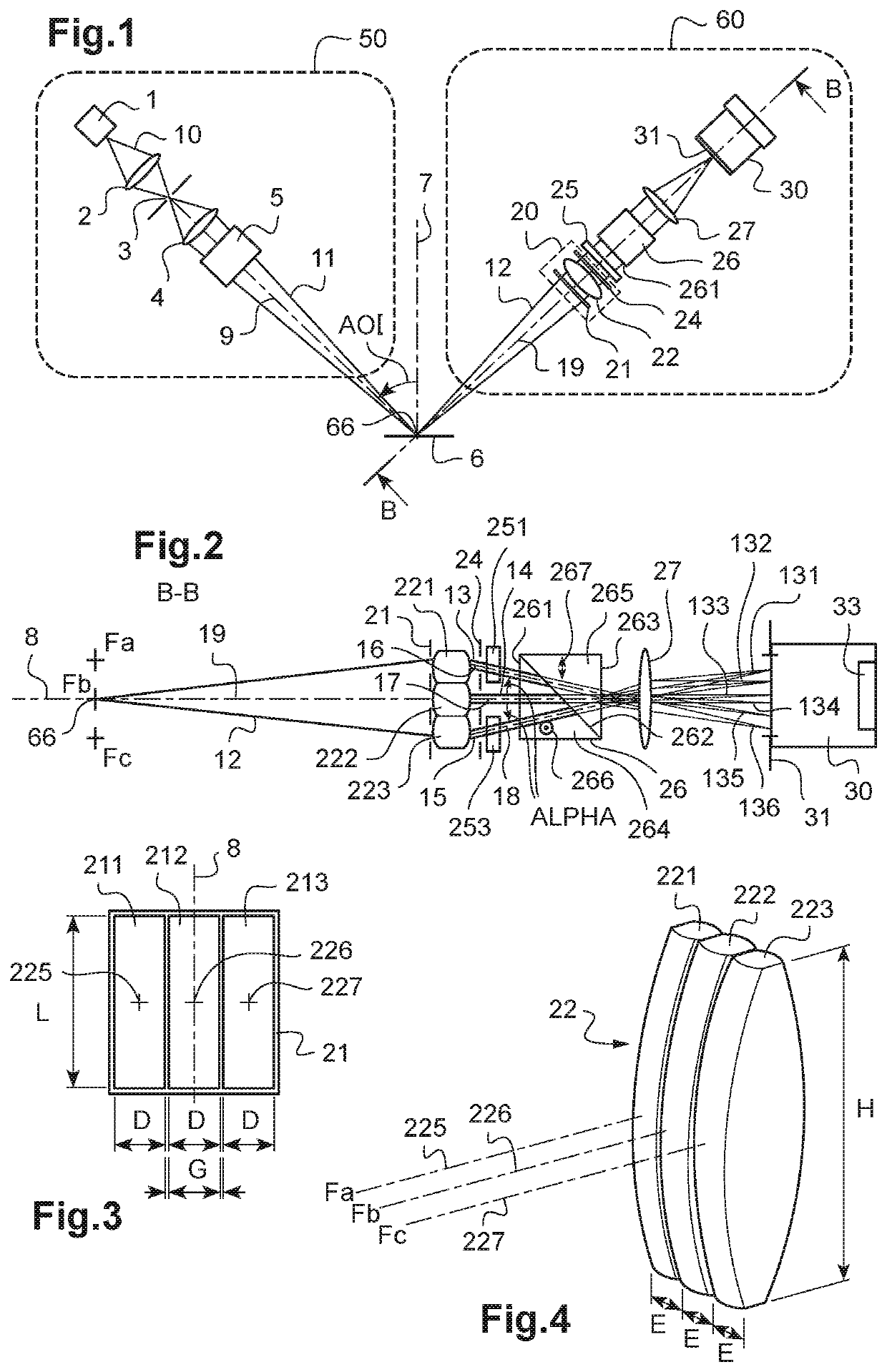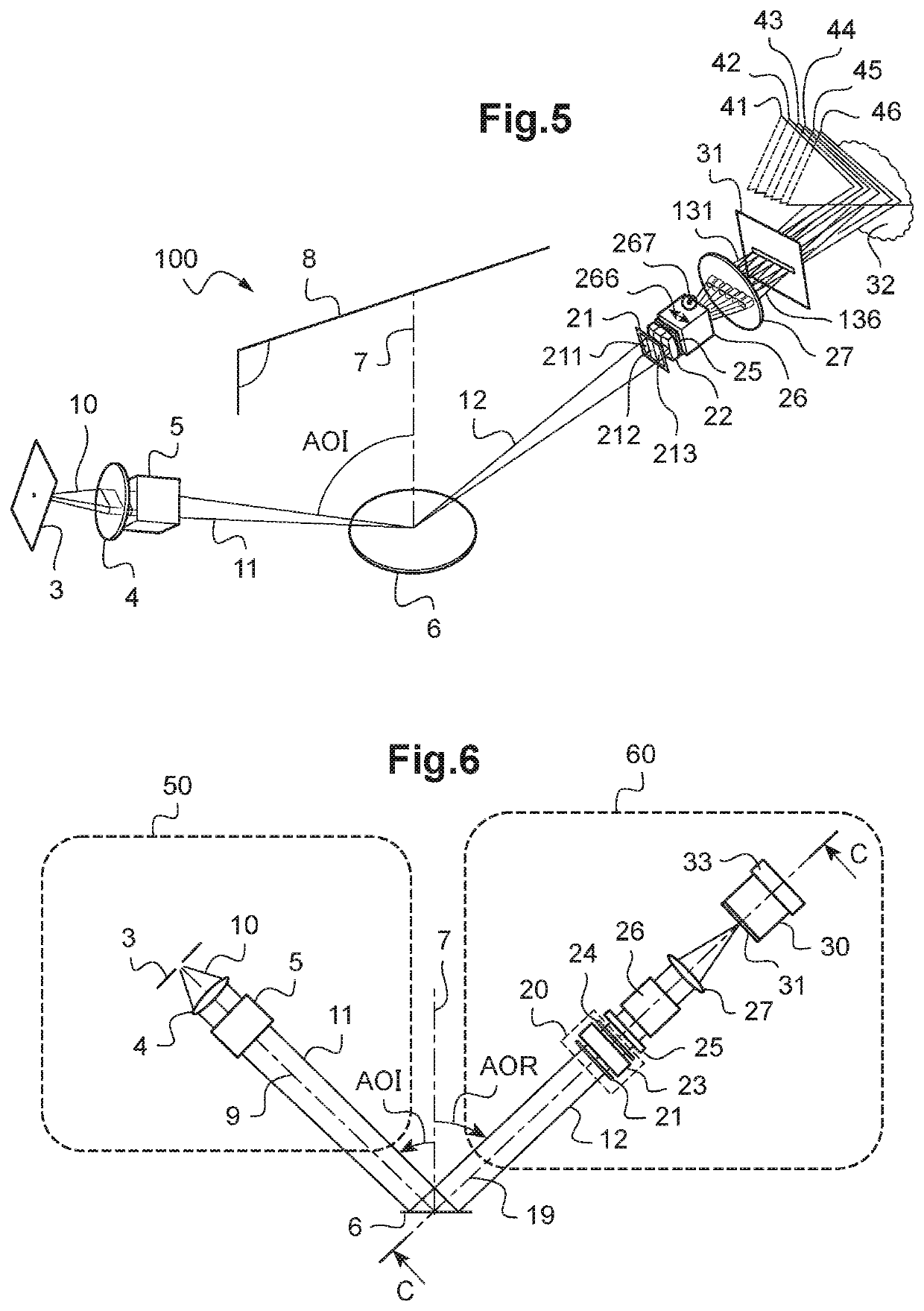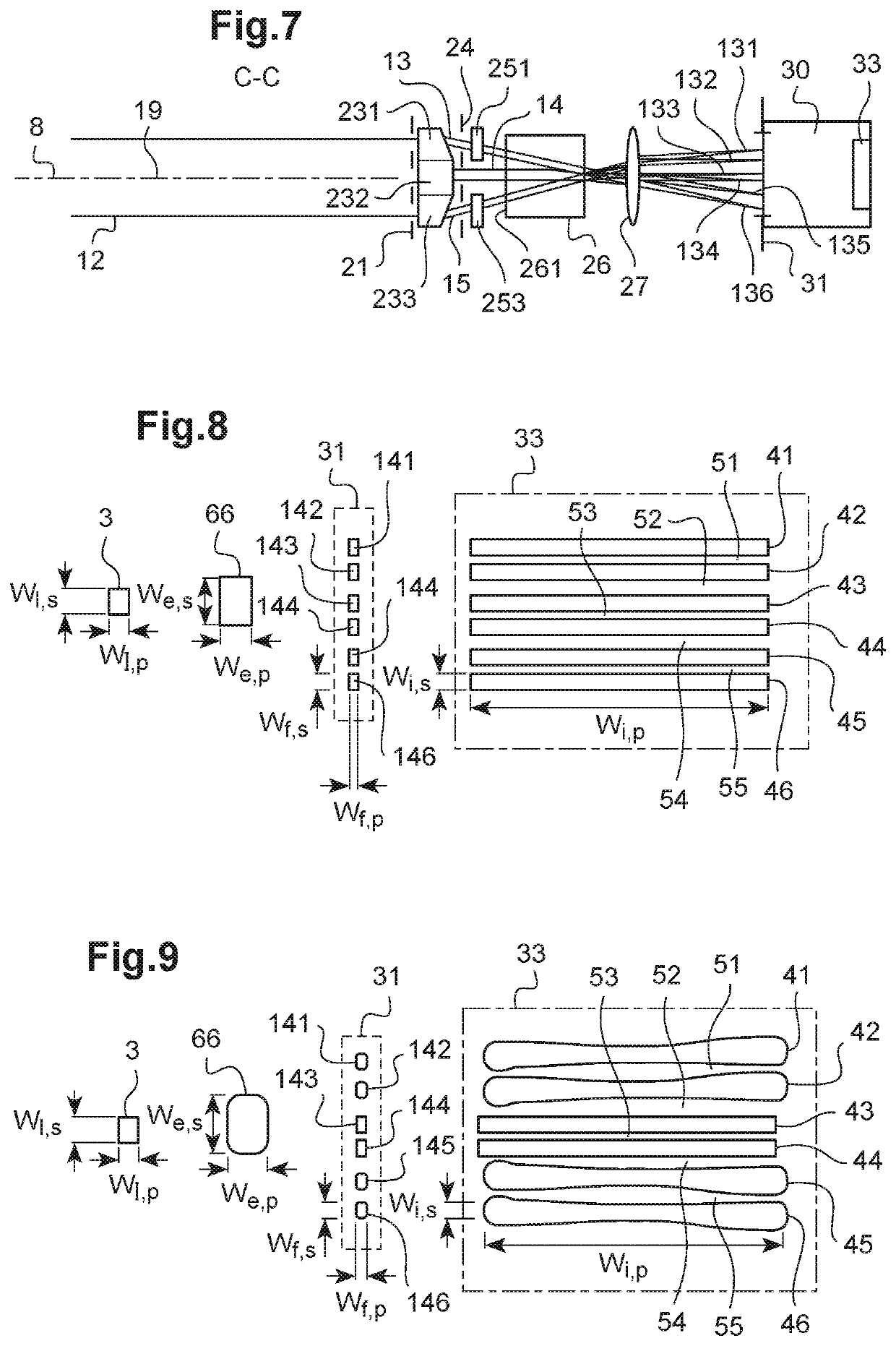Instantaneous ellipsometer or scatterometer and associated measuring method
a technology of instantaneous ellipsometry and scatterometer, which is applied in the field of optical instruments, can solve the problems of affecting measurement accuracy, modulation suffers from a certain number of drawbacks, and the use of an optical polarization modulator based on a rotating component may have drawbacks in terms of vibration generation, long-term reliability and robustness
- Summary
- Abstract
- Description
- Claims
- Application Information
AI Technical Summary
Benefits of technology
Problems solved by technology
Method used
Image
Examples
first embodiment
[0066]In FIGS. 1 to 5 is shown an ellipsometer or scatterometer according to a
[0067]The ellipsometer or scatterometer includes an illumination arm 50 and a detection arm 60 arranged on either side of a sample 6 that is to be measured. The illumination arm 50 includes a light source 1, a first optical system 2, a source diaphragm 3, another optical focusing system 4 and a polarizer 5. Preferably, the polarizer 5 is arranged downstream from the optical focusing system 4. As an alternative, the polarizer 5 can be arranged upstream from the optical focusing system 4 or between different components of the optical focusing system 4.
[0068]The light source 1 emits a source light beam 10, preferably in a spectrally extended wavelength range, for example from 360 nm to 700 nm for a xenon flash lamp. The first optical system 2 forms the image of the source on the source diaphragm 3. As an alternative, a fibred light source whose end forms the source diaphragm 3 is used. The light source 1 can ...
second embodiment
[0115]FIGS. 6 and 7 show an ellipsometer or scatterometer according to a The same signs of reference denote components or systems similar to those of FIGS. 1 to 5.
[0116]Similarly to the first embodiment, the illumination arm 50 includes a source diaphragm 3, an optical system 4 and a polarizer 5. However, unlike the first embodiment, the optical system 4 of the illumination arm 50 is arranged so as to illuminate the sample 6 with a polarized incident light beam 11 that is collimated and not focused on the sample 6. In the second embodiment, the polarized incident light beam 11 is a beam collimated on the sample corresponding to a planar wavefront. Moreover, in the second embodiment, the secondary light beam 12 formed by reflection, transmission or diffraction of the polarized incident light beam 11 on the sample 6 is also a collimated beam corresponding to a planar wavefront.
[0117]FIG. 7 schematically shows the detection arm 60 according to the second embodiment in a sectional plan...
PUM
| Property | Measurement | Unit |
|---|---|---|
| wavelength range | aaaaa | aaaaa |
| thickness | aaaaa | aaaaa |
| thickness | aaaaa | aaaaa |
Abstract
Description
Claims
Application Information
 Login to View More
Login to View More - R&D
- Intellectual Property
- Life Sciences
- Materials
- Tech Scout
- Unparalleled Data Quality
- Higher Quality Content
- 60% Fewer Hallucinations
Browse by: Latest US Patents, China's latest patents, Technical Efficacy Thesaurus, Application Domain, Technology Topic, Popular Technical Reports.
© 2025 PatSnap. All rights reserved.Legal|Privacy policy|Modern Slavery Act Transparency Statement|Sitemap|About US| Contact US: help@patsnap.com



